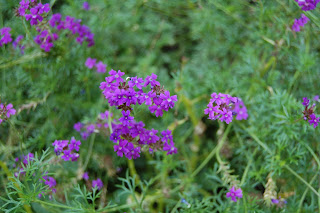Monday, July 24, 2017
Sunrise: 5:54 am
Sunset: 7:48 pm
Temperature at Noon: 79 degrees
Sun's Angle: 78 degrees
UV: Very High
Humidity: 72%

At the height of the day the front of hive #1 looks a little sparse, yet activity inside the hive indicates a healthy population. The coming and going from the entrance is constant. At night time everyone is pretty much tucked up inside and no one really comes out till morning.

Hive #2 is a completely different ball of beeswax. Throughout the day there is a constant gathering of chatterboxes pretty much over the front of the whole hive. There is, just like with #1, a constant coming and going, even though it is said we are well past the honey/nectar flow. At night the whole front and landing board is completed covered with little bodies -- unless the temperature is cool, then everyone is inside.

The difference between the two colonies is remarkable. Presently I don't have the experience to know if I should be concerned. This is definitely normal -- for now -- and there doesn't appear to be any distress ... with either hive. I'm keeping a daily eye on things, so we'll see.
The buckwheat has resurfaced. Last time it took two weeks to flower. We're watching.

















